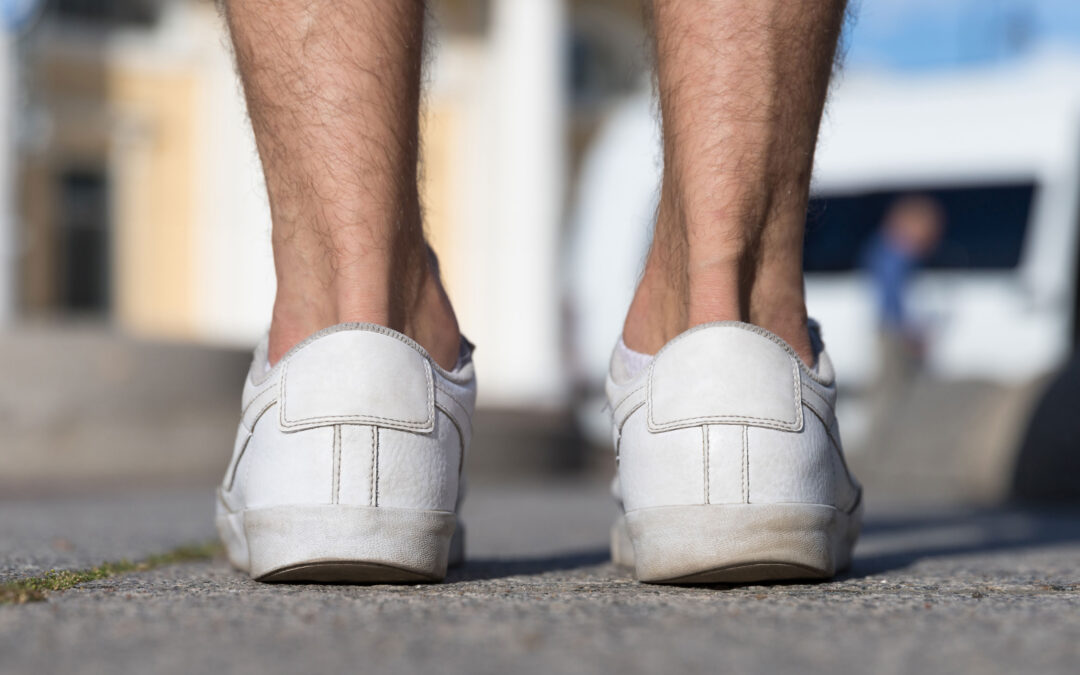When troubleshooting the source of persistent back pain, most people look to obvious culprits—poor posture, inappropriate lifting techniques, or a previous injury. Few consider what’s on their feet.
Yet the connection between your footwear and spine health is stronger than many realize, creating a chain reaction that can travel from your toes all the way up to your neck.
Your feet are your body’s foundation, absorbing impact and keeping you stable with every step. Considering the average person takes 5,000 to 10,000 steps a day, that’s thousands of chances for the wrong shoes to throw your body out of alignment and contribute to back pain.
The tricky part? Most people don’t realize their footwear is the problem. Instead, they try different treatments for their back pain while continuing to wear shoes that are making things worse. So, let’s take a closer look at how what’s on your feet might be affecting what’s happening in your back.
Can Unsupportive Shoes Cause Back Pain?
The short answer is yes. Unsupportive footwear can absolutely contribute to back pain, though the relationship might not be immediately apparent.
When you walk or stand in unsupportive shoes, your feet may pronate (roll inward) or supinate (roll outward) excessively. This alters the natural alignment of your ankles, which in turn affects your knees, hips, pelvis, and eventually your spine. Your body compensates for this imbalanced foundation by adjusting posture and movement patterns, often placing additional stress on your back.
High heels provide a clear example of this domino effect. When wearing high heels, your center of gravity shifts forward, forcing your body to compensate by increasing the curve in your lower back (lordosis). This altered posture places excessive pressure on your lumbar spine and can lead to muscle fatigue and pain over time. Studies indicate that regular high heel wearers often develop chronic lower back pain due to these persistent postural changes.
Flat shoes without proper arch support present a different but equally problematic scenario. Without adequate support, your arches may collapse during weight-bearing activities. This flattening can cause your ankles to roll inward, internally rotate your legs, and tilt your pelvis forward—all of which increase stress on your lower back.
Even athletic shoes that appear supportive can cause issues if they’re not appropriate for your specific foot type or movement patterns. Running shoes with excessive cushioning might feel comfortable initially but can actually reduce proprioception (your awareness of foot position) and destabilize your natural gait, ultimately affecting spinal alignment.
The timing of footwear-related back pain often provides clues to the connection. Many people notice their discomfort worsens throughout the day as they spend more time in unsupportive shoes. Others experience increased pain during or after specific activities performed in particular footwear. These patterns can help identify whether your shoes might be contributing to your back issues.
Choosing Spine-Friendly Footwear: What to Seek and Avoid
Finding footwear that supports spinal health involves understanding both what to look for and what to avoid. The goal is shoes that promote natural alignment while providing appropriate support for your individual foot structure and daily activities.
Here’s what you’ll want to look for:
Proper Arch Support: Perhaps the most important feature of spine-friendly footwear is appropriate arch support. This doesn’t mean maximum support for everyone—it means support that matches your specific arch type. Those with flat feet generally need shoes with more substantial arch support, while those with high arches may need better cushioning to compensate for reduced natural shock absorption.
Adequate Cushioning: Shoes should provide enough cushioning to absorb impact without being excessively soft. The ideal amount varies based on activity and body weight. For walking and everyday wear, moderate cushioning in the heel and forefoot helps reduce the impact forces that travel up your kinetic chain to your spine.
Heel Height and Design: A modest heel-to-toe drop (the difference in height between heel and forefoot) of about 10-12mm is typically ideal for most people. This slight differential helps maintain natural alignment while reducing pressure on the lower back. Avoid completely flat shoes or those with heels higher than two inches for regular wear.
Proper Fit: Shoes that are too tight compress your feet unnaturally, while those that are too loose allow excessive movement that can alter your gait. Look for footwear with adequate toe room (about half an inch between your longest toe and the shoe end) and a snug but comfortable fit through the midfoot and heel.
Firm Midsole: A shoe’s midsole provides essential stability. Press on the middle portion of the shoe—it should feel firm rather than completely flexible or totally rigid. Excessive flexibility fails to provide needed support, while too much rigidity prevents natural foot movement.
In contrast, avoid:
- Flat shoes
- High heels
- Worn-out footwear
- Ultra-cushioned options
- Wearing incorrect shoes for specific activities
Finding Relief Beyond Better Shoes
Your Bessemer chiropractor is here to help you find relief! Beyond our shoes, there are various other factors that could be contributing to your pain. At Premier Chiropractic Center, we can help you get to the bottom of it! Book your appointment today.

Recent Comments